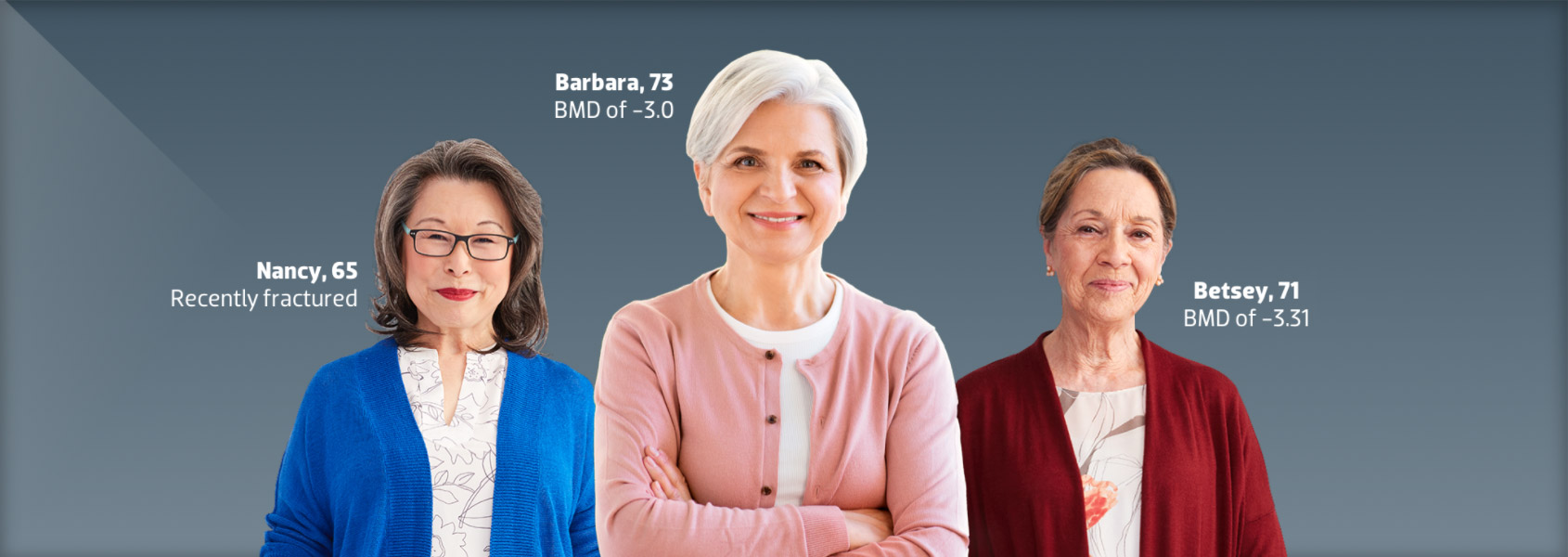Very low BMD and her maternal history of hip fracture are just two signs that Barbara’s first fracture could be sooner than she thinks.
Patients like Barbara need to help reduce the risk of a fracture
Lifestyle:
- Barbara is 73 and lives in a very active social community
- She enjoys meeting her neighbors at local events, most of which are within walking distance
- As she nears the age her mother was when she suffered a hip fracture, Barbara herself is becoming nervous about fractures
- She worries a fracture may affect her social life and mobility
- Her doctor recently suggested she get a DXA scan so they can reassess her BMD
Despite Barbara’s current therapy, her BMD remains very low.
Patients like Barbara, with multiple risk factors for fracture, need to build bone quickly. Now is a good time to discuss the benefits of a treatment that will rapidly build new bone within 12 months.







